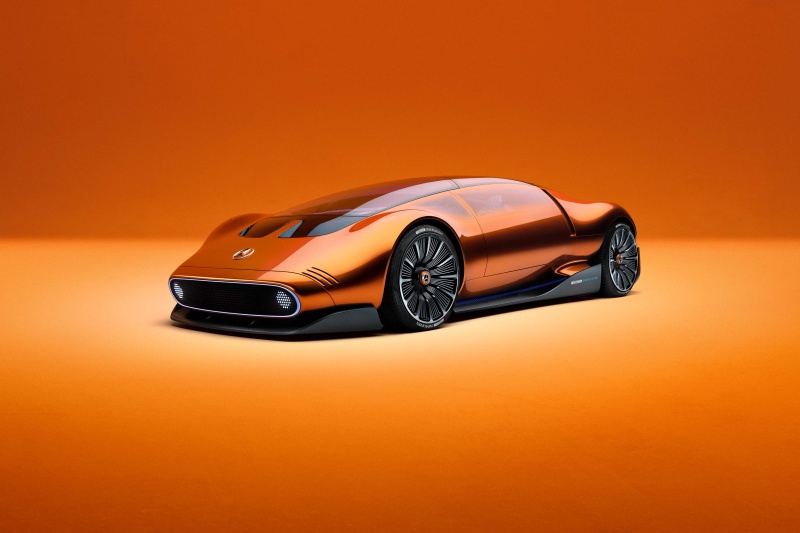
-
Published: 05 July 2023

When a carmaker revives an old design, it does so with a car that has been a great commercial success in the past, or at least a car that has achieved great achievements on
edited by |Jus Mcmahon
Technology section - CJ journalist
Berlin – July,5,2023
historic circuits or race tracks. But Mercedes did it with a car that in the past was only a demo model that carried the C111 designation, and that's because the Vigen 111 that we're talking about here, comes to honor its sister C111 .
As is customary with test cars, the lines of the Vigen 111 body painted at the company's International Design Center in Carlsbad, California will little by little know their way into future Mercedes cars, and this in itself is more than remarkable.
While the original model had mechanical options based on four Winkle-type Ram engines, five-cylinder diesel engines, or eight-cylinder engines with turbocharging, the new car has advanced electrical options that add up to being a design exercise.
The roots of this test car are clearly evident in the fact that it has doors that, when opened, take the form of a seagull wing!
It is this characteristic that also goes back to the legendary 1954 model 300SL.
There are a number of other details that connect the Vigen 111 with its predecessors, namely through the front end, which takes an oval shape with three slots with hash marks in the corners, and double round taillights.
The black-painted double hood openings more clearly mimic the design of the prototype presented in the Seventies.
In terms of driving power, the Vigen 111 has Axial-Flow electric motors designed by Mercedes subsidiary YASA, thanks to which the low-profile position of the car.
Unlike the engines in other Mercedes electric cars, the coaxial flow units are 66 percent more energy-intensive, which gave Mercedes engineers more flexibility, regarding the possibility of installing them in different areas of the car, knowing that the bulging wheel arches clearly indicate where the coaxial flow engines are located near the wheels, with four individual engines giving them a total power of 1300 horsepower.
Of course, all this is theoretical, since the vision 111 is a design study, not a test of a powertrain.
While the axial flow engines allowed the car to acquire thin, non-bulging dimensions at the front, the car's design team decided to provide relatively high dimensions of the interior in order to obtain a spacious space inside, where a color combination based on silver, orange and white dominates to serve as a reference to the design spirit that was followed in the seventies of the last century.
Mercedes has not officially announced whether the Vigen 111 will reach commercial production, but it does not seem likely that the company will produce
A low-altitude electric powered supercar is coming anytime soon.
{source}<script async src="https://pagead2.googlesyndication.com/pagead/js/adsbygoogle.js?client=ca-pub-4474625449481215"
crossorigin="anonymous"></script>
<!-- moss test ad -->
<ins class="adsbygoogle"
style="display:block"
data-ad-client="ca-pub-4474625449481215"
data-ad-slot="6499882985"
data-ad-format="auto"
data-full-width-responsive="true"></ins>
<script>
(adsbygoogle = window.adsbygoogle || []).push({});
</script>{/source}
